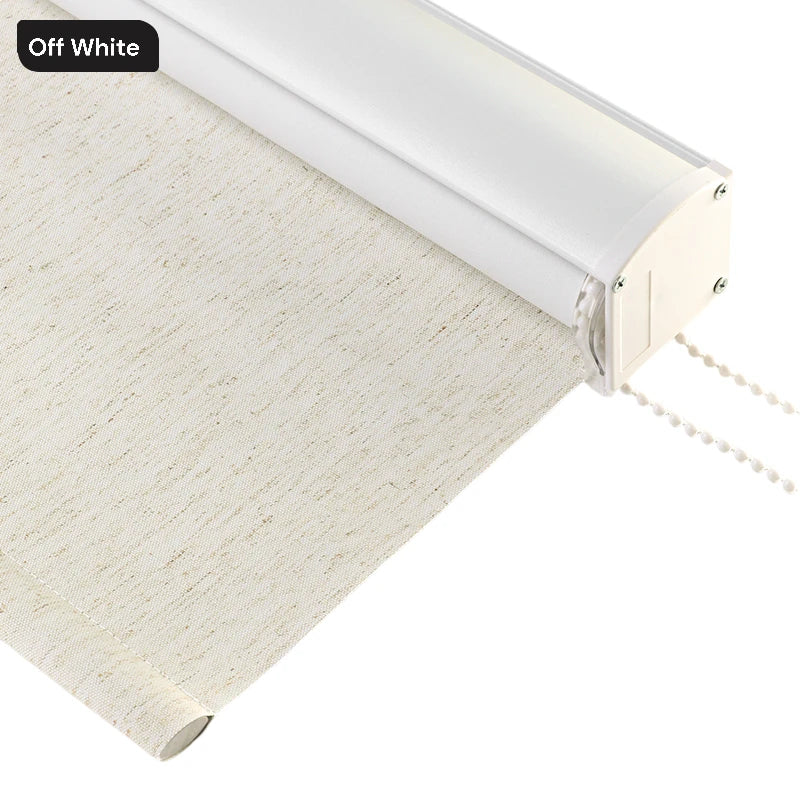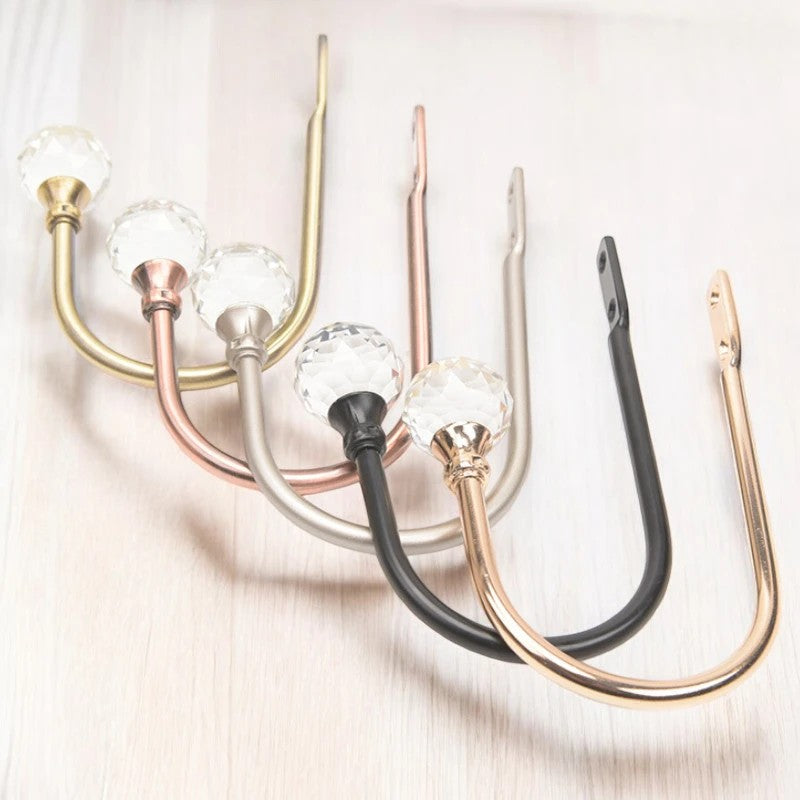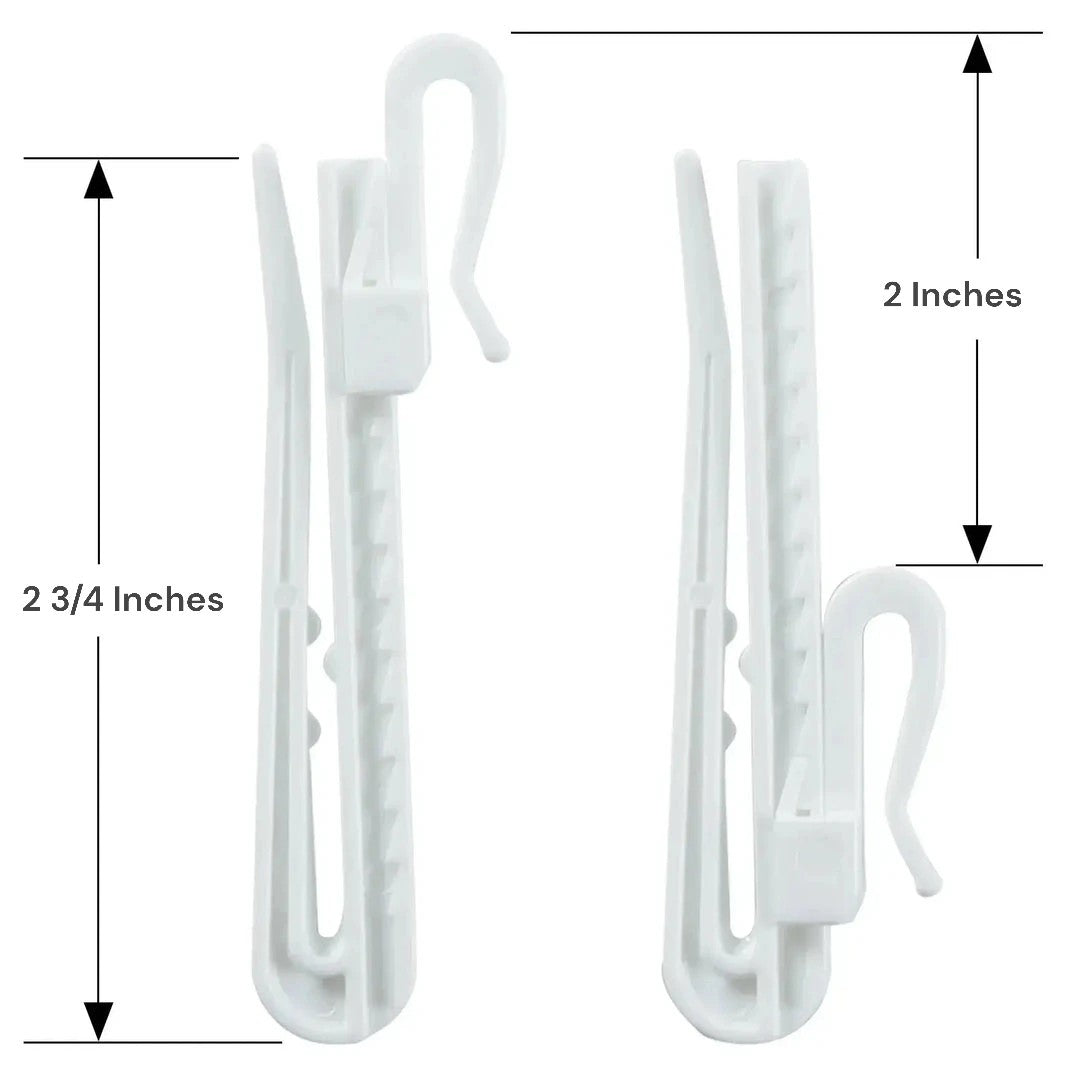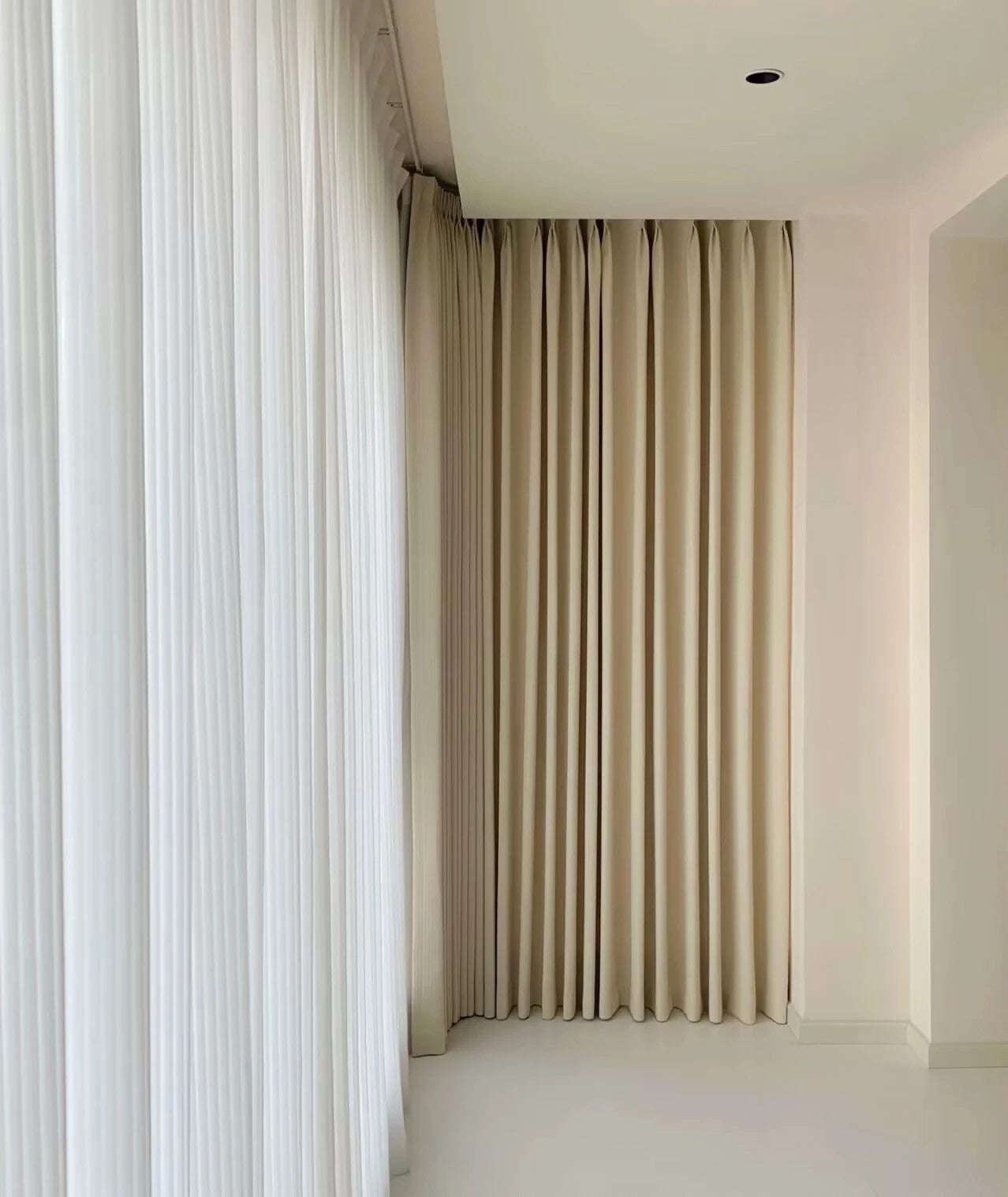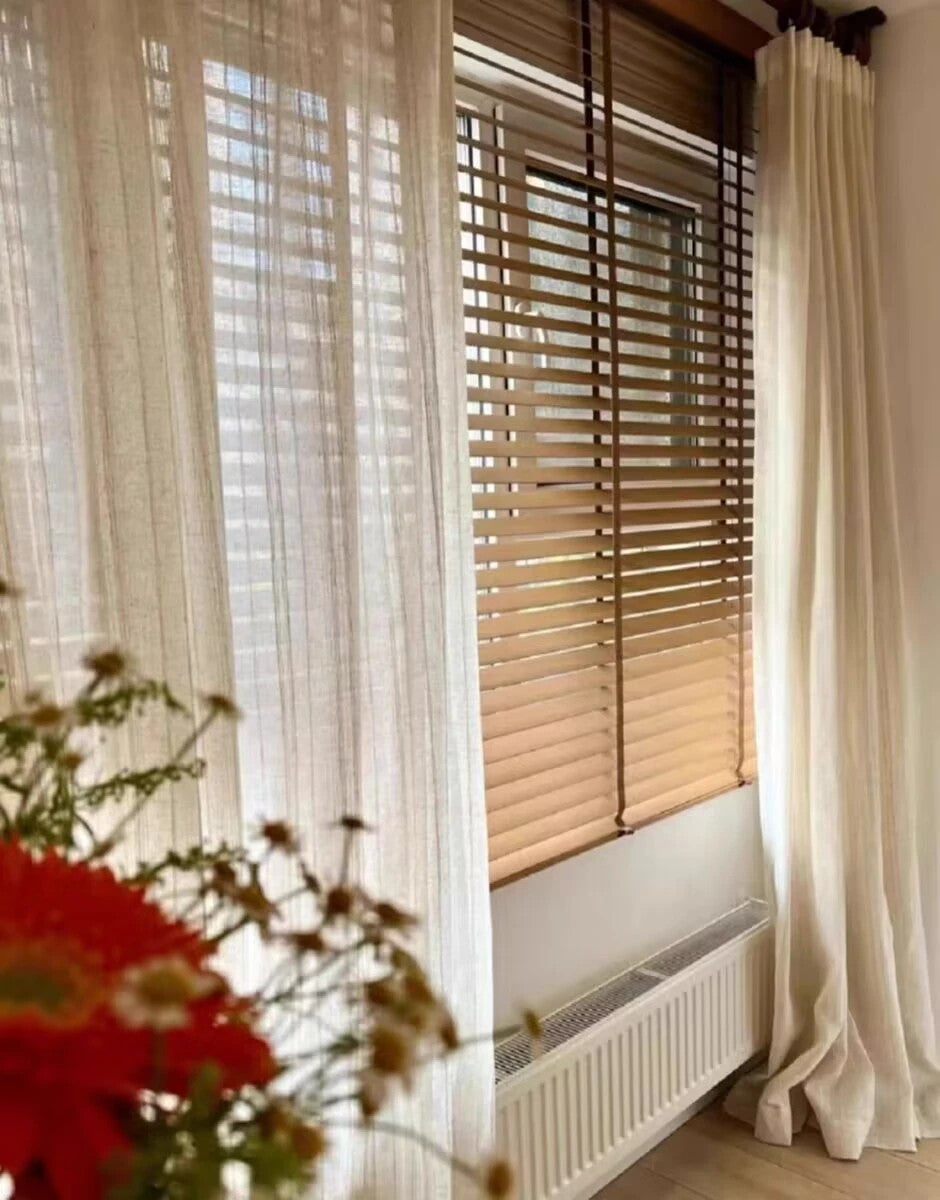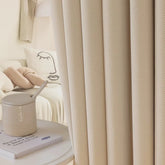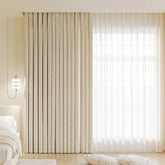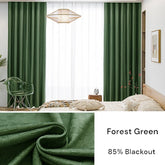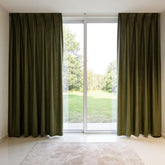Understanding the Weight of Curtains: A Comprehensive Guide
When it comes to curtains, understanding their weight is essential for selecting the right curtain poles or tracks, as well as ensuring their durability and performance. Curtains are generally classified into light weight, medium weight, and heavy weight categories based on the fabrics used, and each category has specific characteristics.
To determine your curtain's weight, consider various factors such as the fabric chosen, lining requirements, width and drop of curtains, and curtain heading style. Additionally, fabric weight and fabric drape are important considerations when choosing fabrics for curtains or garments.
Key Takeaways
- Understanding the weight of curtains is crucial for selecting the appropriate curtain pole or track.
- Curtains are classified into light weight, medium weight, and heavy weight categories based on the fabrics used.
- Fabric weight and fabric drape are important considerations when choosing fabrics for curtains or garments.
Curtain Weight Categories
Curtain weight is typically classified into categories, including light weight, medium weight, and heavy weight. These categories help determine the suitable curtain hardware for installation, as well as the level of support necessary to hold up the curtains.
Light weight curtains are ideal for smaller windows, kitchens, or rooms that require a softer look. They are typically made of voile, gauze, sheers, or lightweight cotton. Light weight curtains can be a great option for layering, as they allow natural light to filter through while still offering some level of privacy.
Medium weight curtains are versatile and can be used in a variety of rooms and settings. They are usually made of cotton, polyester, or a poly mix fabric and can be full length. Medium weight curtains offer some level of insulation and light control, making them practical for bedrooms, living rooms, and dining rooms.
Heavy weight curtains are suitable for wide or tall windows and rooms with a grander aesthetic. They are made of heavier fabrics like velvets, silks, damask, or chenilles, and offer a high level of insulation and light control. Heavy weight curtains can create a dramatic effect in a room, but it's essential to ensure your curtain hardware can support their weight.
When selecting curtains, it's also important to consider the fabric weight, which refers to how much a fabric weighs. Fabric weight can range from very lightweight to heavy weight, and it can impact the way the curtains hang and drape.
Understanding the weight categories of curtains and the weight of fabrics is crucial in selecting the right fabrics and hardware for your curtains. In the next sections, we'll explore the specific characteristics of light, medium, and heavy weight curtains, as well as the factors that affect curtain weight and how to choose the right curtain hardware for your curtains.
Light Weight Curtains
Light weight curtains, weighing up to 6.5kg per pair, are typically made of voiles, gauzes, sheers, and lightweight cotton fabrics. These curtains are perfect for windowsill length sizes rather than full length to the floor. They offer a breezy and light feel to the room, allow plenty of natural light in and can be a great way to add a decorative touch to your home.
When selecting curtain hardware for light weight curtains, it is important to choose a curtain pole or track that is suitable for their weight. Curtain poles with a diameter of 19mm are only suitable for light weight curtains. Curtain poles with a diameter of 28mm are suitable for light to medium weight curtains. Curtain poles with a diameter of 35mm or more are suitable for medium to heavy weight curtains. The product specifications will state the weight suitability of each curtain pole or track.
It is worth noting that fabric weight and fabric drape are related but not the same. The weight of the fabric refers to how much it weighs, while the drape of the fabric refers to how it hangs and behaves on the body. Light weight fabrics have more drape and are flowy while heavy weight fabrics have little drape and hold themselves away from the body.
Lastly, a great advantage of light weight curtains is that they are easy to maintain because they do not accumulate too much dust and dirt. They can often be washed at home easily or taken to a dry cleaner if necessary.
We love light weight curtains for their breezy and effortless feel, making them perfect for smaller windows like the ones found in kitchens, bedrooms or bathrooms. They are not only easy to maintain and clean but can also offer a decorative touch to any room in the house.
Medium Weight Curtains
Medium weight curtains, weighing up to 11kg per pair, are commonly made of 100% cotton, polyester, or a poly mix fabric. These curtains are suitable for full-length curtains that cover wide windows. If you are unsure of the weight of your curtains, you can weigh them on a household scale. The weight of curtains is an important consideration when selecting curtain hardware, as heavier curtains require stronger support.
Medium weight curtains can be lined or blackout lined, depending on your needs. Lining curtains can add to their weight, so it's essential to factor this in when selecting curtain hardware. The amount of fabric needed for medium weight curtains is usually calculated using a multiplier of 2.25.
When choosing curtain hardware, it's vital to consider weight suitability. Most curtain poles and tracks will state their weight suitability on the product specifications tab. Larger diameter curtain poles and tracks are suitable for heavier curtains, and passing brackets can be used for additional support.
It's essential to note that fabric weight and fabric drape are related but different concepts. Fabric weight refers to how much a fabric weighs, while fabric drape refers to how a fabric hangs and behaves on the body. Understanding the weight and drape of fabrics is important when selecting fabrics for garment construction.
If you are looking for curtains that are heavier than medium weight curtains, you may want to consider heavy weight curtains. Heavy weight curtains are made from heavier fabrics such as velvets, silks, damask, or chenilles and tend to be used for very wide or tall windows. They are often lined or blackout lined and may have an interlining.
Factors Affecting Curtain Weight
When determining the weight of your curtains, several factors come into play, including the fabric chosen, lining requirements, dimensions, and heading style. The weight of curtains is classified into categories, such as light weight, medium weight, and heavy weight. Light weight curtains are typically made of voiles, nets, sheers, or lightweight cotton curtains, while medium weight curtains are usually made of 100% cotton, polyester, or a poly mix fabric. Heavy weight curtains are made from heavier fabrics like velvets, silks, damask, or chenilles.
The fabric weight of curtains is measured in either grams per square metre (GSM) or ounces. Fabric drape is another important factor to consider in selecting curtains, as it determines how the curtains will hang and behave. Light weight fabrics have more drape, while heavy weight fabrics have less drape. Factors that affect fabric drape include the fluidity of the fabric and its ability to hang straight down, cling to the body, or hold pleats.
Lining requirements also contribute to the weight of curtains. Standard lining adds a moderate weight, while blackout lining and interlining both add significant weight. The width and drop of the curtains also play a part in the weight of the curtains. As the dimensions increase, so does the weight.
Finally, the curtain heading style can affect the overall weight. Pencil pleat curtains, for example, add more weight due to the pleating tape and hooks, while eyelet curtains are lighter as they do not require hooks or additional tape. When selecting a heading style, it is important to consider the weight of the curtains and the suitability of the curtain pole or track.
Overall, when considering the weight of curtains, it is essential to choose a fabric and lining that meets your requirements while taking into account the dimensions and heading style. The weight of your curtains will then determine the curtain hardware that is suitable for supporting it.
Choosing Curtain Hardware
To ensure proper installation, it's essential to choose curtain poles or tracks that can support the weight of your curtains. Curtain poles and tracks are often classified into categories based on the weight they can support. Light weight curtains, such as voiles, nets, sheers, and lightweight cotton curtains, typically weigh up to 6.5kg per pair. Medium weight curtains, made from fabrics like polyester or cotton, can weigh up to 11kg per pair. Heavy weight curtains, which are usually made from heavier fabrics like velvets or silks, weigh anything over 11kg per pair. It's essential to choose a pole or track that is suitable for the weight of your curtains to ensure stability and functionality.
When it comes to curtain poles, the suitability for different weight categories can vary. For example, 19mm curtain poles are only suitable for light weight curtains, while 28mm curtain poles can support light to medium weight curtains. Curtain poles with a diameter of 35mm or more are suitable for medium to heavy weight curtains. It's important to check the weight suitability of each curtain pole or track, as this information is usually provided on the product specification tabs.
When it comes to curtain tracks, there are a few factors to consider for heavy weight curtains. Roller gliders can be added to curtain tracks to increase weight bearing and ensure smooth opening and closing of the curtains. For heavy weight curtains, corded curtain poles are recommended, as they feature a robust metal glider channel for added strength and durability. Hand drawn curtain poles can also be a good option for heavy weight curtains, especially for households with young children.
In addition to weight considerations, fabric weight and drape are also important factors to consider when choosing curtain hardware. Fabric weight refers to how much a fabric weighs, and it can have an impact on the durability, warmth, and overall look of the curtains. Fabrics are classified based on weight, ranging from very lightweight to heavy weight. Light weight fabrics are suitable for voile or sheer curtains, while heavy weight fabrics like velvet or silk are better for curtains that cover wide or tall windows.
Fabric drape, on the other hand, refers to how a fabric hangs and behaves on the body. Lighter weight fabrics tend to have more drape, while heavy weight fabrics have little drape. The drape of the fabric can impact how the curtains hang and whether they cling to the body or stand away from it. It's important to consider the desired drape of the curtains when selecting the fabric and curtain hardware.
In conclusion, when choosing curtain hardware, it's crucial to consider the weight of your curtains and select a pole or track that can support that weight. Additionally, understanding the fabric weight and drape can help you make informed decisions about the type of fabric to use and how it will hang. By considering these factors, you can ensure that your curtains not only look great but also function well in your space.
Wave Curtains and Curtain Weight
Wave curtains, a popular curtain heading style, tend to fall into the light or medium weight categories. They are often used for their contemporary and relaxed look, and are suitable for a variety of spaces such as living rooms, bedrooms, and offices. Wave curtains are generally lighter in weight than other heading styles, such as pinch pleat or pencil pleat, due to their unique design.
When it comes to selecting suitable curtain hardware for wave curtains, it is important to consider the weight of the curtains. Curtain poles and tracks have weight categories to determine their suitability for different curtain weights. For example, 19mm curtain poles are suitable for light weight curtains, while 28mm curtain poles are suitable for light to medium weight curtains. Curtain tracks, such as the Silent Gliss wave curtain tracks, are compatible with wave curtains and have weight specifications, with standard wave gliders supporting curtains weighing 2.5kg/meter.
While fabric weight and fabric drape are related, they are not the same. Fabric weight refers to how much a fabric weighs, while fabric drape refers to how a fabric hangs and behaves on the body. When selecting fabrics for curtains or garments, both weight and drape should be considered.
Fabric weight is important for the construction of curtains or garments as it affects durability, warmth/coolness, comfort, and the overall look. Fabrics are classified into different weight categories, ranging from very lightweight to heavy weight. Each weight category has specific examples and recommended uses.
Fabric drape is important for determining how a garment will hang on the body. Lighter weight fabrics generally have more drape, while heavy weight fabrics have little drape. Fabrics are categorized based on their drape as fluid/high drape, moderate drape, or full bodied/low drape. The drape of the fabric determines whether it will cling to the body or stand away from it.
Overall, understanding the weight of wave curtains is crucial when selecting suitable curtain hardware. Fabric weight and drape should also be considered when selecting curtains or fabrics for garments, as they affect the overall appearance and functionality.
Additional Support Options for Heavy Curtains
For heavy weight curtains on metal curtain poles, passing brackets can be added for extra support. These are brackets that pass the pole through the bracket, giving additional support in the center of the pole where it can sag or bow due to the weight of the curtains. Passing brackets can also be used to provide support for eyelet style curtains, which are more prone to sagging due to their construction.
When it comes to choosing a suitable curtain pole or track for heavy curtains, there are several options available. Curtain poles with a diameter of 35mm or larger are typically recommended for medium to heavy weight curtains, while 28mm poles are better suited for light to medium weight curtains.
Hand-drawn curtain poles with passing brackets can provide added support for heavy curtains, as can corded curtain poles and motorised tracks. It is important to ensure that the rawl plugs used for installation are suitable for the wall substrate, as heavy curtains can put a considerable strain on the fixing points.
In addition to selecting the right curtain pole or track, it's important to consider the weight of the fabric and the curtain heading style. Heavier fabrics such as velvet, silk, damask, and chenille are typically used for heavy weight curtains, while lighter fabrics such as cotton and linen are suitable for lighter weight curtains. The weight of the curtains will also depend on the lining requirements, width and drop of the curtains, and the curtain heading style.
Curtain tracks that come with roller gliders or can be upgraded to roller gliders are also recommended for heavy curtains, as they provide a smoother operation and reduce friction between the curtains and the track. This can help to prolong the life of the curtains and prevent damage to the track.
Overall, selecting the appropriate curtain hardware is essential for ensuring that heavy curtains are supported and hung correctly. By considering factors such as curtain weight, fabric choice, and curtain heading style, it's possible to choose the right hardware that will provide the necessary support and durability for heavy curtains.
Conclusion
In summary, understanding the weight of curtains is crucial for selecting the appropriate curtain poles or tracks and ensuring their durability and performance. When it comes to curtains and fabrics, the weight and drape are two important factors to consider. The weight of the curtains depends on the type of fabric and determines the thickness, warmth, and durability.
Light-weight curtains are suitable for voiles and sheers, while medium-weight curtains are made from 100% cotton or polyester. Heavy-weight curtains are made from heavier fabrics such as velvet or silk. The weight of the curtains can be determined by the fabric chosen, lining requirements, width and drop of the curtains, and the curtain heading style.
On the other hand, fabric drape refers to how a fabric hangs and behaves on the body. Light-weight fabrics have more drape, while heavy-weight fabrics have less drape. Fabrics with fluid drape, such as silk and satin, cling to the body, while fabrics with low drape, like denim, stand away from the body. Choosing the right weight and drape of curtains and fabrics is essential for creating the desired look and feel in a space or garment.
So, whether you're selecting curtains for your home or designing a garment, it's important to consider the weight and drape of the fabric. By doing so, you can ensure that the final product has the desired look and feel. We hope this guide has been helpful in understanding the weight of curtains and selecting the appropriate curtain hardware.
FAQ
Q: What are the different weight categories for curtains?
A: Curtains are typically classified into light weight, medium weight, and heavy weight categories based on their fabric and overall weight.
Q: What materials are light weight curtains made of?
A: Light weight curtains are usually made of voiles, nets, sheers, and lightweight cotton fabrics.
Q: What are medium weight curtains made of?
A: Medium weight curtains are commonly made of 100% cotton, polyester, or a poly mix fabric.
Q: What factors contribute to the weight of curtains?
A: Factors such as the fabric chosen, lining requirements, curtain dimensions, and heading style all contribute to the overall weight of curtains.
Q: How do I choose curtain hardware based on curtain weight?
A: It's important to select curtain poles or tracks that can support the weight of your curtains. Manufacturers often provide weight suitability information for their products.
Q: Can wave curtains be heavy weight?
A: No, wave curtains tend to fall into the light or medium weight categories as they are less full than other heading styles.
Q: Are there additional support options for heavy curtains?
A: Yes, passing brackets can be added for extra support when using metal curtain poles for heavy curtains. However, this option is not suitable for eyelet style curtains.



